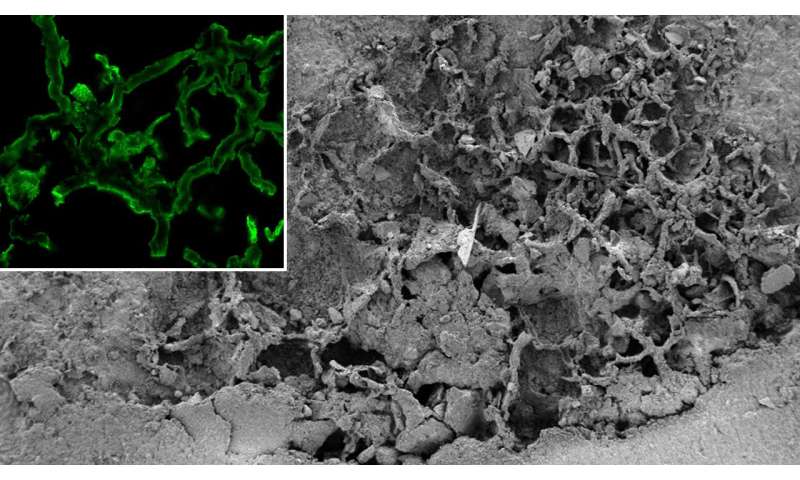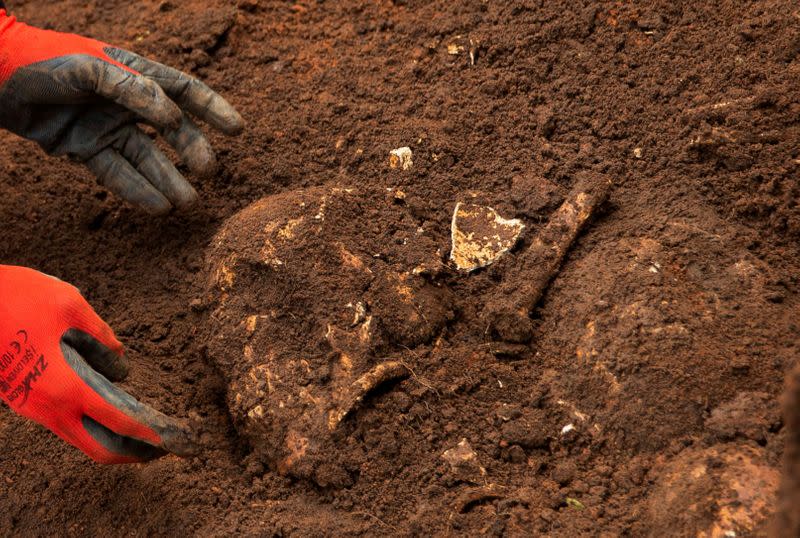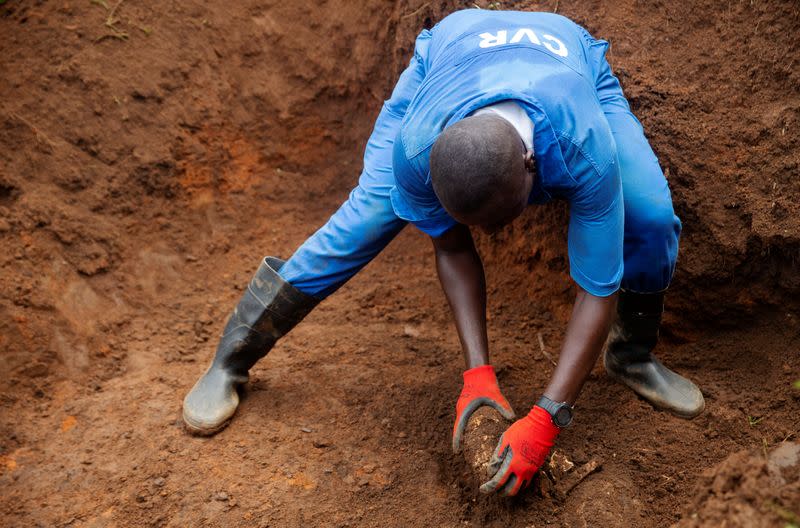First mushrooms appeared earlier than previously thought

According to a new study led by Steeve Bonneville from the Université libre de Bruxelles, the first mushrooms evolved on Earth between 715 and 810 million years ago, 300 million years earlier than the scientific community had believed until now. The results, published in Science Advances, also suggest that mushrooms could have been important partners for the first plants that colonized the continental surface.
The origin and evolution of the kingdom Fungi—more commonly known as mushrooms—are still very mysterious. Only 2 percent of species have been identified, and their delicate nature means fossils are extremely rare and difficult to discern from other microorganisms. Until now, the oldest confirmed mushroom fossil was 460 million years old.
A group of researchers led by Professor Steeve Bonneville, from the Biogeochemistry and Earth System Modelling research unit at the Université libre de Bruxelles has discovered a new mushroom fossil—the oldest to ever be identified from its molecular composition. The results are published in Science Advances.
The fossilized remains of mycelium (a network of interconnected microscopic strands) were discovered in rocks between 715 and 810 million years old—during a time in Earth's history when life on the continents' surface was in its infancy. These ancient rocks, found in the Democratic Republic of the Congo and part of the collection of the Africa Museum on Tervuren, formed in a lagoon or coastal lake environment. "The presence of fungi in this transitional area between water and land leads us to believe that these microscopic mushrooms were important partners of the first plants that colonized the Earth's surface around 500 million years ago," explains Steeve Bonneville, professor at the Université libre de Bruxelles and coordinator of the study.
Previous mushroom fossils had been identified only based on the morphology of organic remains extracted from rocks using corrosive acid compounds. "This method damages the chemistry of organic fossils and only allows morphological analysis, which can lead to incorrect interpretations because certain morphological characteristics are common to different branches of living organisms," Bonneville says.
The authors of this new study used multiple molecular analysis techniques at a microscopic scale: synchrotron radiation spectroscopy (XANES, μFTIR), μ-Raman confocal microscopy, fluorescence microscopy (CLSM) and electron microscopy (FIB-TEM-HAADF). Using these techniques, it was possible to study the chemistry of organic remains in situ, without chemical treatment. This enabled the researchers to detect traces of chitin, a very tough compound found in the cell walls of fungi. They also demonstrated that the organisms were eukaryotes, i.e., their cells had a nucleus. "Only by cross- correlating chemical and micro-spectroscopic analyses could we demonstrate that the structures found in the old rock are indeed ~ 800-million-year-old fungal remains," says Liane Benning from GFZ Potsdam.
"This is a major discovery, and one that prompts us to reconsider our timeline of the evolution of organisms on Earth," says Bonneville. "The next step will be to look further back in time, in even more ancient rocks, for evidence of those microorganisms that are truly at the origins of the animal kingdom."
More information: S. Bonneville el al., "Molecular identification of fungi microfossils in a Neoproterozoic shale rock," Science Advances (2020). advances.sciencemag.org/content/6/4/eaax7599


















 The Democratic presidential candidate Bernie Sanders at a campaign rally at the University of Minnesotas Williams Arena on November 3.
The Democratic presidential candidate Bernie Sanders at a campaign rally at the University of Minnesotas Williams Arena on November 3.